On-demand delivery reaches new heights during COVID-19

Surging on-demand delivery during COVID-19 isn’t a surprise – but its temporary rise could lead to sustained returns. A look at proprietary customer data from Sendbird, leading communication platform for chat, voice, and video, reveals promising trends.
How COVID-19 impacted on-demand delivery
Social distancing requirements and safety
As regulations to stay inside became the norm, delivery apps became the way to get the things you needed safely.
Restaurants closed dining rooms
Restaurants and bars were forced to shut down in-person dining, leading more establishments to offer on-demand delivery to keep their doors open.
Delivery apps added more options
As safety remained a top concern, delivery applications for restaurants and grocers offered cashless payment options and contactless delivery, further minimizing risk.


Your order is on its way
Ensure it gets there with Sendbird.
Sendbird’s on-demand delivery customers
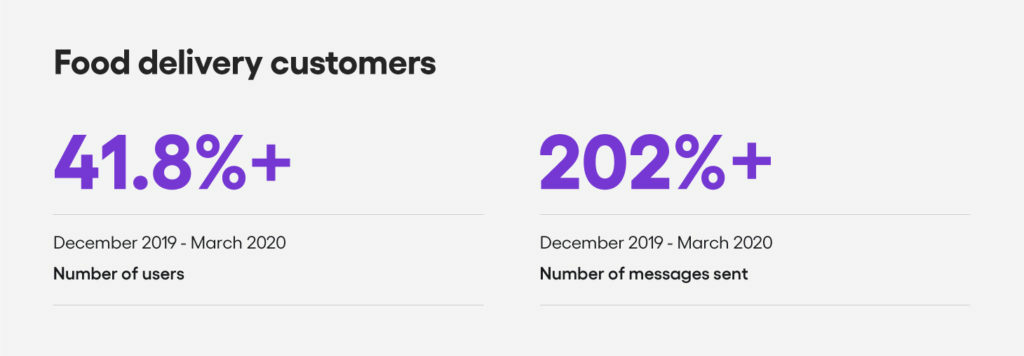
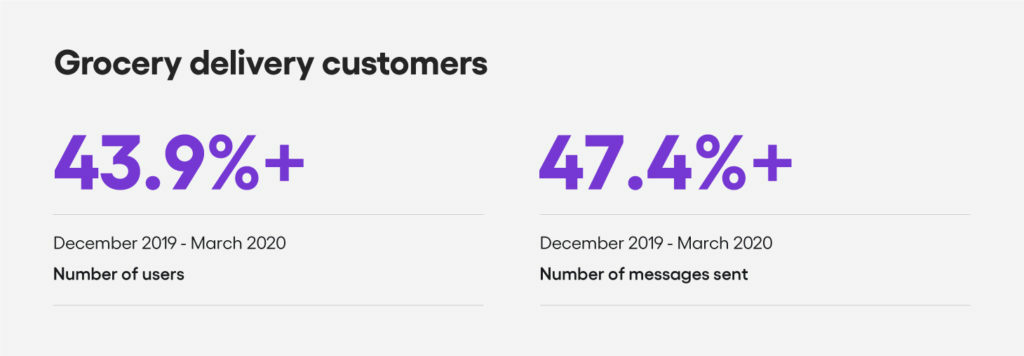
A Sendbird customer
One of our customers, a food delivery service, saw its messages jump by nearly 5 times in the first three months of the year.
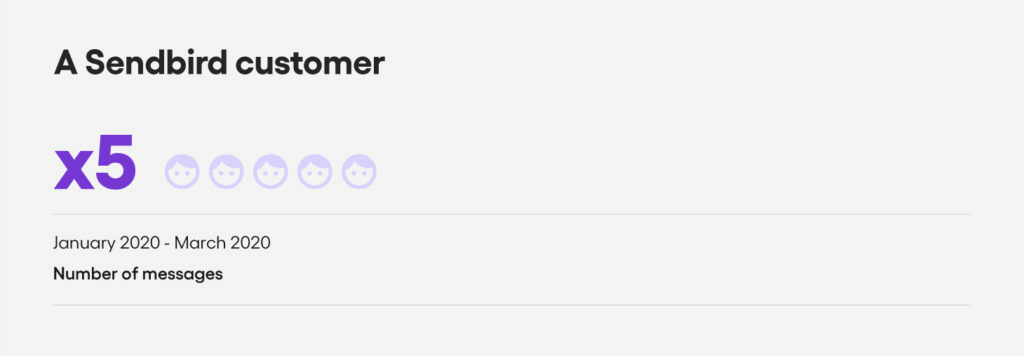
Food and grocery delivery surge industrywide during COVID-19
On-demand delivery surged across the board, but food delivery and grocery delivery experienced the most radical growth.
On-demand food delivery apps were already on track to go from $82 billion in 2018 to $200 billion by 2025. But COVID-19 caused an unprecedented surge in food delivery across the board.
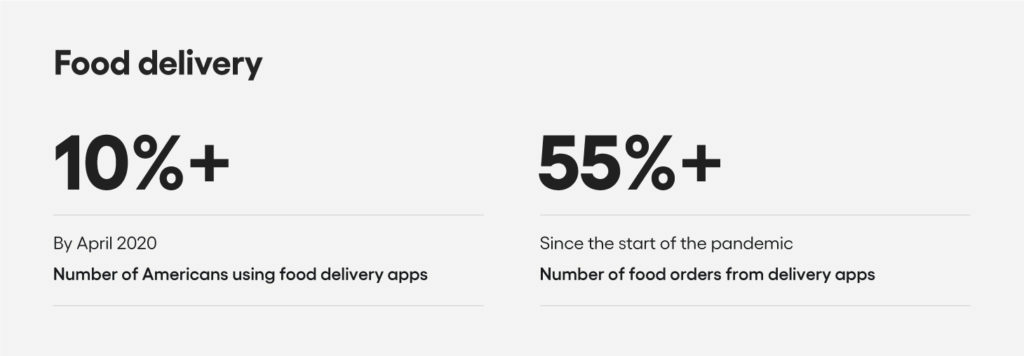
Americans using food delivery apps rose by 10%. By April, 32% of Americans had ordered food via a food delivery app (up from 22% in March of 2019).
Food orders from delivery apps increased by 55%. Local restaurants reported their orders from third-party apps increased from 20% to 75% since the start of the virus.

Changing legislation and the COVID environment paved the way for Drizly (an alcohol delivery app) to see a 300% increase in orders at the beginning of the pandemic.
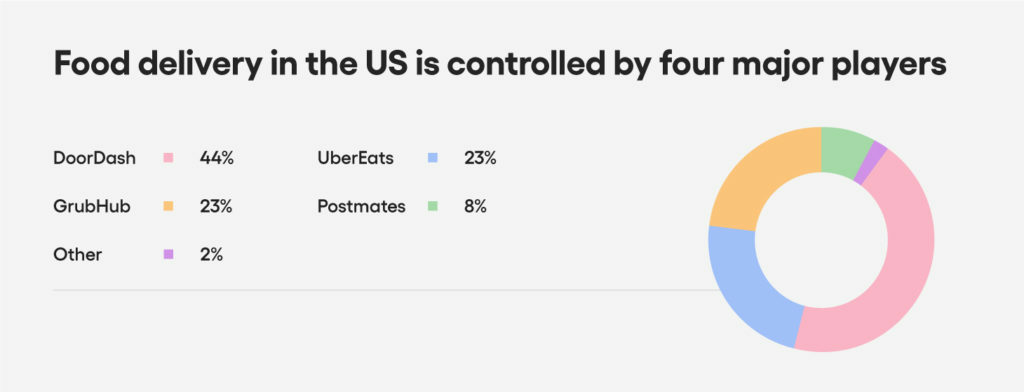
Grubhub’s orders increased by +28% in April and May.

UberEats’ bookings grew by +80% in April. By June, they had a 10X increase in restaurant signup.

DoorDash raised $400 million in equity in June (thanks to growth during COVID), bringing its valuation to almost $16 billion.

The future of on-demand food delivery
The big players are betting on food delivery to increase:
Grubhub was acquired by Dutch Food Delivery for $7.3 billion.

Postmates was acquired by UberEats for $2.65 billion.

But growth isn’t all smooth sailing. The competition among delivery services has become increasingly volatile, and food delivery growth is being outpaced by grocery delivery. Food delivery companies must deliver a seamless customer experience to stay relevant.
By April, the total monthly volume of online grocery orders industrywide jumped by +193%.
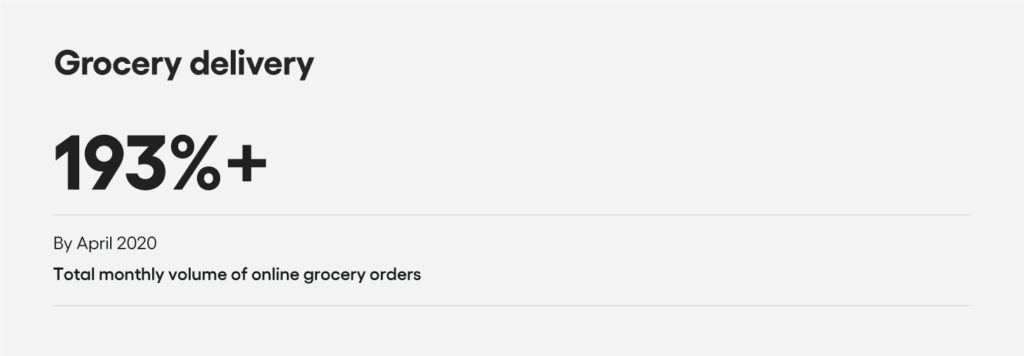
From Mid-February to Mid-March daily grocery delivery app downloads increased substantially:

In May, Americans spent $6.6 billion on online grocery sales. That’s up 25% from April, even though restrictions had begun to lift around the country.

Around 52% of consumers have purchased groceries online in 2020, and 62.5% plan to do it again.
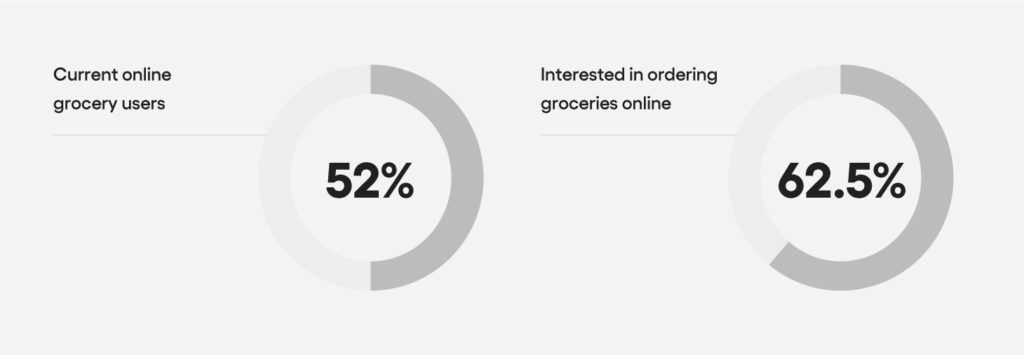
Projections by 2025
Online grocery sales will total $86.4 billion or be 11.6% of the overall grocery market.











